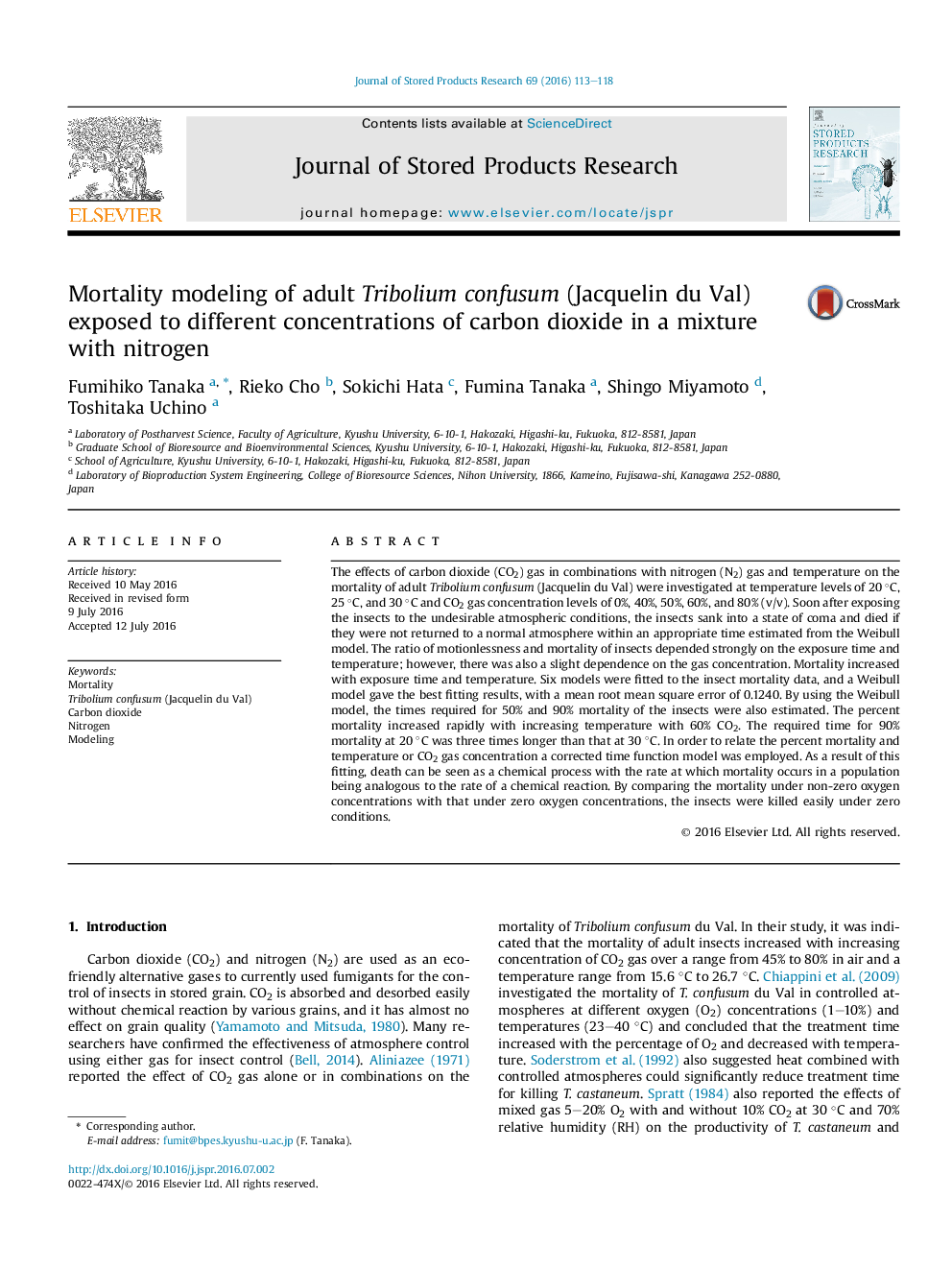| Article ID | Journal | Published Year | Pages | File Type |
|---|---|---|---|---|
| 6378315 | Journal of Stored Products Research | 2016 | 6 Pages |
Abstract
The effects of carbon dioxide (CO2) gas in combinations with nitrogen (N2) gas and temperature on the mortality of adult Tribolium confusum (Jacquelin du Val) were investigated at temperature levels of 20 °C, 25 °C, and 30 °C and CO2 gas concentration levels of 0%, 40%, 50%, 60%, and 80% (v/v). Soon after exposing the insects to the undesirable atmospheric conditions, the insects sank into a state of coma and died if they were not returned to a normal atmosphere within an appropriate time estimated from the Weibull model. The ratio of motionlessness and mortality of insects depended strongly on the exposure time and temperature; however, there was also a slight dependence on the gas concentration. Mortality increased with exposure time and temperature. Six models were fitted to the insect mortality data, and a Weibull model gave the best fitting results, with a mean root mean square error of 0.1240. By using the Weibull model, the times required for 50% and 90% mortality of the insects were also estimated. The percent mortality increased rapidly with increasing temperature with 60% CO2. The required time for 90% mortality at 20 °C was three times longer than that at 30 °C. In order to relate the percent mortality and temperature or CO2 gas concentration a corrected time function model was employed. As a result of this fitting, death can be seen as a chemical process with the rate at which mortality occurs in a population being analogous to the rate of a chemical reaction. By comparing the mortality under non-zero oxygen concentrations with that under zero oxygen concentrations, the insects were killed easily under zero conditions.
Related Topics
Life Sciences
Agricultural and Biological Sciences
Agronomy and Crop Science
Authors
Fumihiko Tanaka, Rieko Cho, Sokichi Hata, Fumina Tanaka, Shingo Miyamoto, Toshitaka Uchino,
